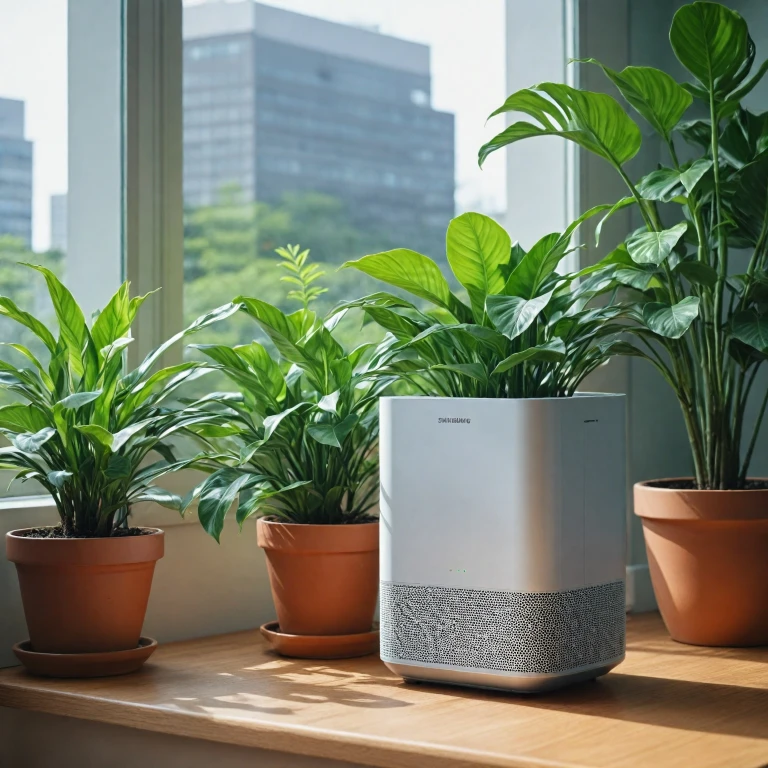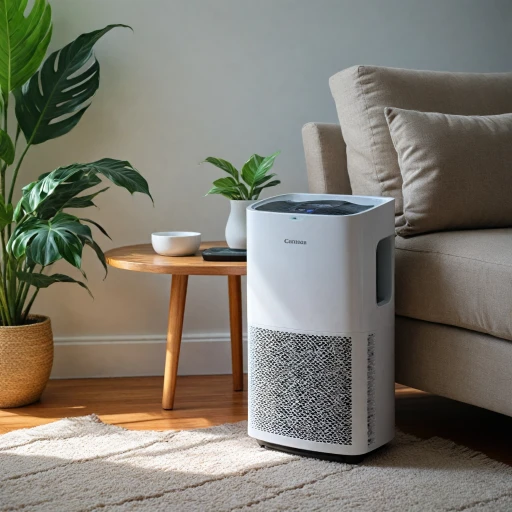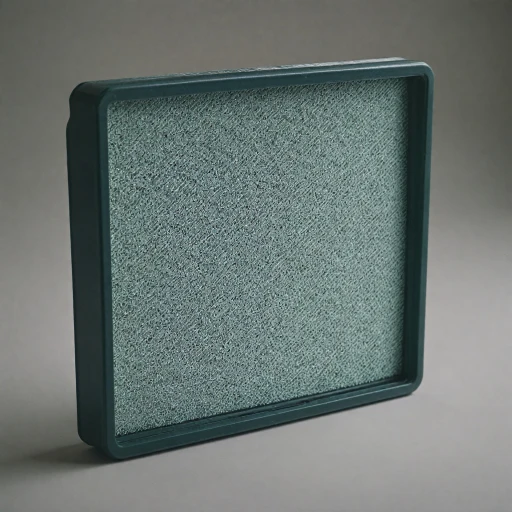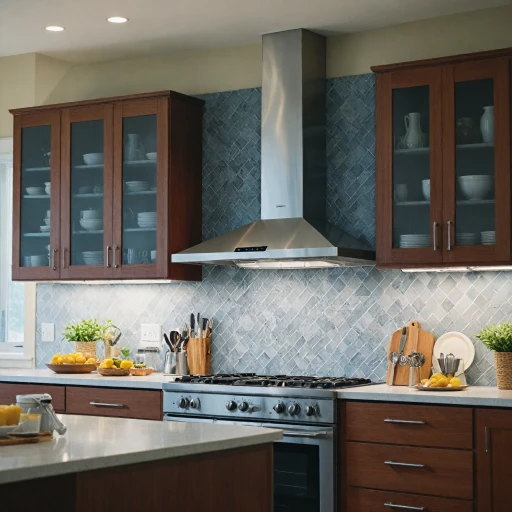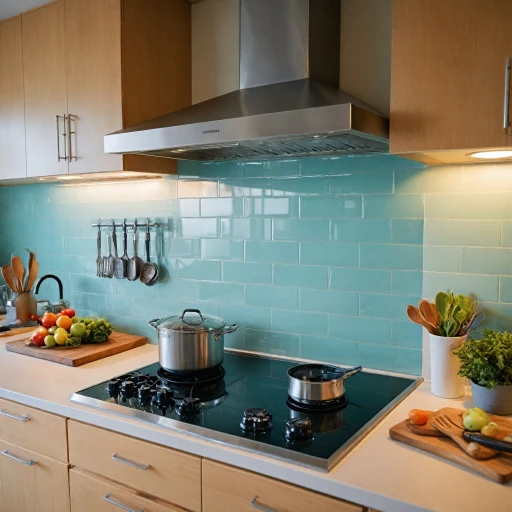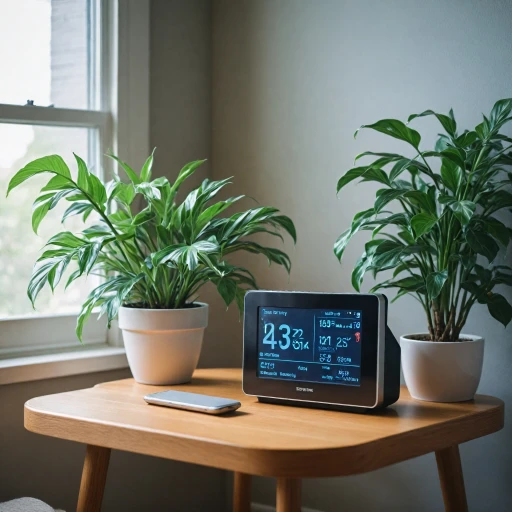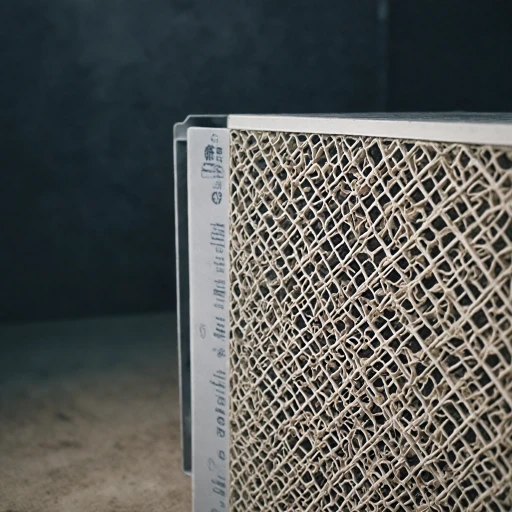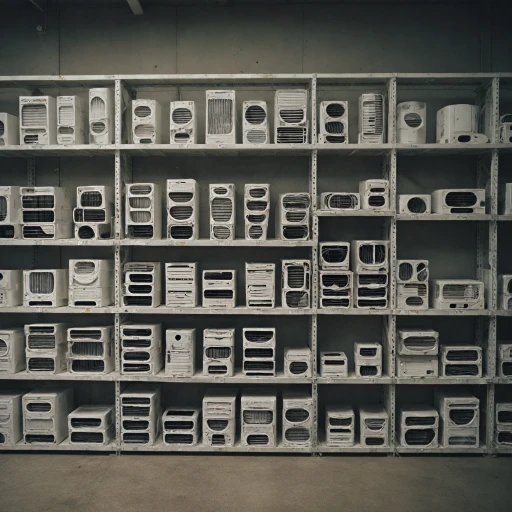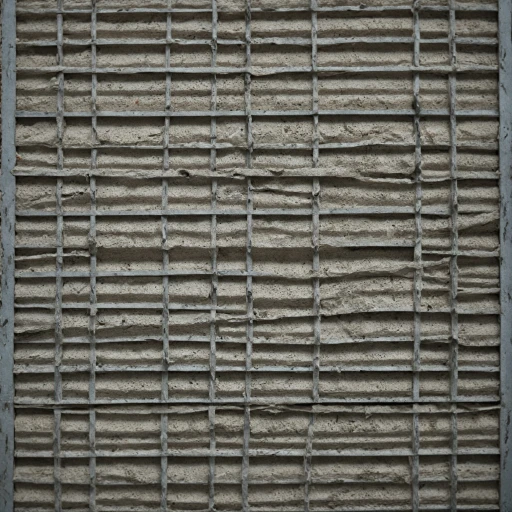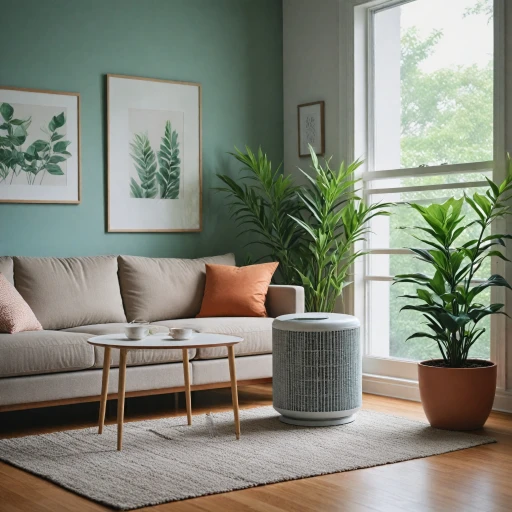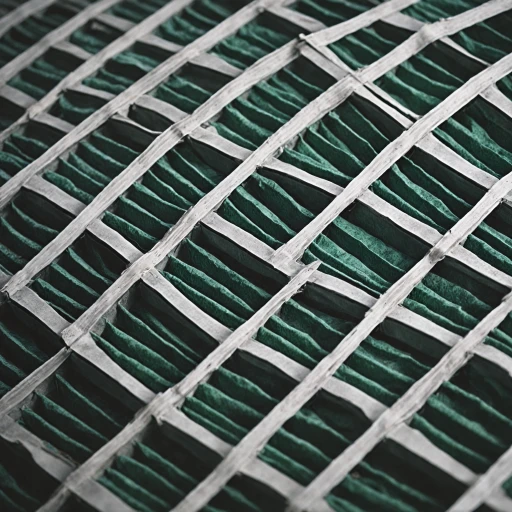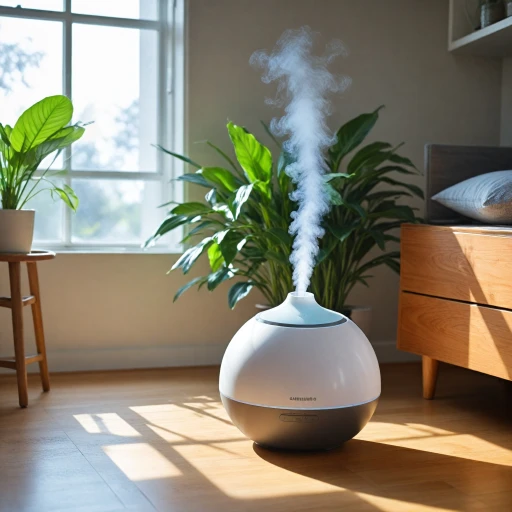
What Are VOCs and Why Are They Harmful?
Understanding Volatile Organic Compounds (VOCs)
Volatile organic compounds, commonly referred to as VOCs, are a group of chemicals found in many products we use daily, including paints, cleaning supplies, and even furniture. These compounds can significantly impact indoor air quality, as they are released into the air through various processes, such as evaporation. When VOCs are present in high concentrations, they can contribute to a variety of health issues, ranging from minor irritations to more serious ailments.
One of the primary concerns with VOCs is their potential to cause short-term health problems such as headaches, nausea, and throat irritation. Moreover, prolonged exposure can lead to more severe health complications, including respiratory issues and an increased risk of cancer. This concern underscores the importance of addressing VOCs effectively to maintain clean air within homes and workplaces.
With the advent of advanced air purification technology, air purifiers equipped with VOC filters have emerged as a crucial tool in mitigating these harmful effects. By effectively filtering out VOCs, these purifiers play a significant role in improving air quality and overall well-being. In the following sections, we will explore how VOC filters work in air purifiers, the types of filters available, and what features to consider when selecting the best air purifier for your needs.
How VOC Filters Work in Air Purifiers
The Mechanism Behind VOC Filtration
Air purifiers equipped with VOC filters primarily focus on removing VOCs from the air to improve indoor air quality. These filters are essential as they specifically target volatile organic compounds, which are gases released from certain products and can be harmful when inhaled. Key to this process is the use of activated carbon, a material that excels in adsorbing gases and particles.
Activated carbon filters work by trapping VOCs as air passes through the purifier. These filters are often composed of granulated carbon, and the lbs of carbon they contain, as well as their design, influence their efficacy. They act on the principle of adsorption, where VOCs stick to the surface of the carbon as air flows through the filter.
Many high-quality air purifiers incorporate additional filtration technologies to complement their VOC filters. For instance, combining true HEPA filters and VOC air filters can effectively remove both particulate matter and organic compounds, ensuring a thorough air purification process. Brands like Alen, IQAir, and Austin Air offer products that provide dual-action filtration, making them a popular choice for users seeking clean air solutions.
Understanding the importance of VOC filters in air purifiers can help consumers not only choose the best air purifier for their needs but also enhance their understanding of related maintenance practices, ensuring they benefit from optimal performance over the long term. For those interested in enhancing their filtration knowledge, exploring the benefits of a specific filter size such as 16x16x1 air filters could provide additional insights.
Types of VOC Filters Available
Exploring Filter Technologies for VOC Removal
When choosing an air purifier specifically designed to tackle VOCs, understanding the variety of filter technologies available is essential. Different filters offer varied efficacies in removing VOCs, particles, and other pollutants from indoor air.- Activated Carbon Filters: A common choice for VOCs air filtration, activated carbon filters stand out for their ability to trap gases and volatile organic compounds through adsorption. They contain numerous small pores that attract and hold VOC molecules, thus enhancing indoor air quality. However, the efficiency of these filters can be influenced by the amount (measured in lbs carbon) and quality of the activated carbon used.
- HEPA Filters: Although high-efficiency particulate air (HEPA) filters are renowned for removing particles such as dust and allergens, they are less effective in filtering gaseous VOCs alone. Nonetheless, combining HEPA with an activated carbon filter can increase overall filtration efficacy.
- Hybrid Filters: Some air purifiers like the Alen and Austin Air models use hybrid filters, combining technologies such as HEPA and activated carbon. These offer the best air cleaning performance by targeting a broad spectrum of pollutants, including VOCs and particles.
- Unique Technologies: Some purifiers, including models from IQAir, boast proprietary technology that enhances VOC removal. These systems are designed for optimal air quality improvement by integrating multiple layers of filtration and often come with a premium price tag.
Benefits of Using Air Purifiers with VOC Filters
Advantages of Incorporating VOC Filters in Air Purifiers
Air purifiers with VOC filters offer numerous advantages that significantly enhance indoor air quality. Not only do they help clean air by removing harmful particles like dust and pollen, but these specialized filters are specifically designed to target volatile organic compounds (VOCs) often found in indoor environments. One of the major benefits is the improved air quality achieved by effectively removing VOCs that are commonly emitted from household products and materials. VOC air can be filled with organic compounds from items such as paints, cleaning products, and even furniture. Using air purifiers equipped with VOC filters helps tackle these pollutants, thus providing a healthier indoor atmosphere. Activated carbon in VOC filters plays a crucial role. This filtration technology binds and removes VOCs air more efficiently by adsorbing them onto the filter's surface, thus reducing potential health risks. Many high-performance air purifiers, including brands known for their air filtration quality, integrate activated carbon filters for this purpose. The best air purifiers with VOC filters also incorporate HEPA filters, which capture minute particles, thereby offering a comprehensive solution. Combining true HEPA with carbon filters ensures that not only VOCs air but also other harmful particles are removed, delivering clean air with enhanced air quality. Moreover, options like the Austin Air HealthMate or IQAir's advanced models provide robust solutions due to their substantial lbs of carbon, which enhances their capacity to remove VOCs effectively. Their proven technology and expert designs make them reliable choices for improving indoor air. Beyond health benefits, an effective VOC filter helps maintain a pleasant environment by reducing odors. This is particularly valuable for areas with poor ventilation or where indoor air quality is consistently a challenge. In summary, choosing air purifiers with VOC filtration not only upgrades your home's air quality but also contributes to better health and comfort, making them a worthwhile investment.Choosing the Right Air Purifier with a VOC Filter
Factors to Consider When Selecting an Air Purifier with a VOC Filter
Choosing the right air purifier with a VOC filter involves several considerations to ensure optimal air quality in your living or working space. Here's what to look for:- VOCs Filtration Efficiency: Not all air purifiers are equally efficient at removing volatile organic compounds. Look for products boasting VOC air removal technology, such as activated carbon filters known for their ability to absorb organic compounds effectively. Certain models, like the IQAir and Austin Air HealthMate, are renowned for their capacity to tackle VOCs.
- Filter Quality and Type: Check if the air purifier comes with a combination of filters, including true HEPA and activated carbon, to capture both particles and VOCs. A carbon filter with several lbs of carbon is ideal for enhanced VOC absorption.
- CADR Rating: The Clean Air Delivery Rate (CADR) is crucial when assessing an air purifier's effectiveness. A higher CADR means the unit can purify air more quickly. Pay attention to the CADR CFM to match your space's ventilation needs.
- Noise Level: Some air purifiers can be noisy, which might not be suitable for spaces where quiet is essential, like bedrooms or offices. Check the product specifications for noise levels to find a model that suits your environmental preferences.
- Price and Long-Term Costs: While the upfront price is significant, consider the long-term expenses related to filter replacements and energy consumption. Certain brands, like Alen and Austin Air, offer quality products at different price points, balancing performance and cost.
- Room Size Compatibility: Ensure the purifier you choose matches the size of the room where it will be used. Air purifiers with higher coverage efficiently maintain clean air, especially in larger spaces.
Maintenance Tips for VOC Filters
Taking Care of Your VOC Filter: Essentials for Long-term Use
Maintaining the quality and efficiency of the filters in your air purifier, especially those designed to handle volatile organic compounds (VOCs), is crucial. Over time, these filters, including activated carbon filters and HEPA filters, can become saturated or clogged. Proper care not only ensures optimal air quality but also extends the lifespan of your purifier.- Regular Inspection: Check your VOC air purifier regularly for any signs of wear or blockages. This will help in catching potential issues early, ensuring steady performance in removing harmful VOCs and other particles.
- Replacement Timeline: Each type of filter has a recommended replacement period. Carbon filters typically need changing every 6 months, whereas HEPA filters might last up to a year depending on usage and air quality levels. Brands like Austin Air and IQAir can provide guidance on specific timelines.
- Clean Surrounding Areas: Ensure that the area around the air purifier is clean. Dust and debris could impact the purifier's efficiency by getting into the system, thus impeding filtration.
- Monitor Air Quality: Keep an eye on the indoor air quality using additional tools if necessary. If you notice persistent issues with air quality or an increase in odors, despite regular maintenance and filter replacement, it might be time for a more thorough inspection or a filter upgrade.
- Purchase High-Quality Filters: Choose filters from reliable manufacturers, ensuring they are certified for effectively removing VOCs and offering good CADR ratings. Investing in high-quality filters upfront, even if at a higher price, like those from Alen or other trusted brands, can prove cost-effective in the long run.
- Noise Level Considerations: If your air purifier’s noise level increases significantly, this could indicate a need for maintenance or replacement of filters. Avoiding excessive noise ensures a more comfortable environment for all.
